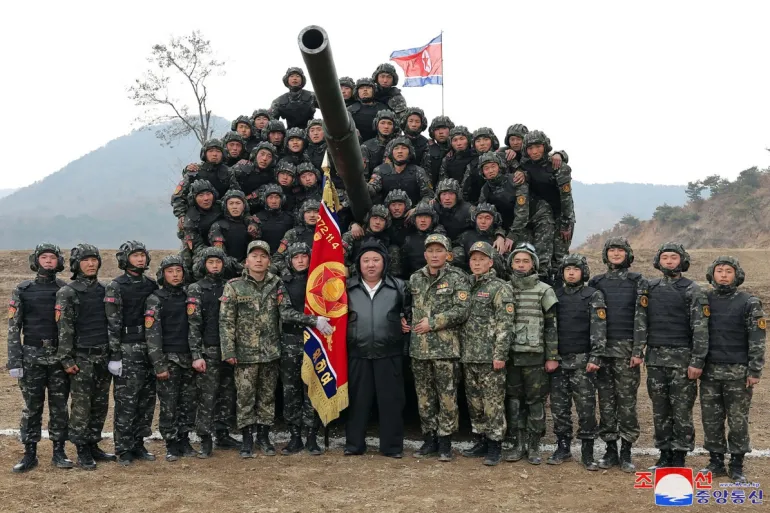
In a calculated display of military strength, North Korean leader Kim Jong Un recently participated in military exercises, including driving a new tank model, amidst the conclusion of the annual joint drills between South Korea and the United States. This proactive engagement underscores North Korea’s unwavering commitment to bolstering its defense capabilities in the face of perceived threats and regional tensions.
Kim Jong Un’s Active Participation in Military Exercises
Despite the conclusion of the 11-day South Korean-U.S. joint military exercises, Kim Jong Un continues to actively observe and participate in military drills. Viewing these exercises as rehearsals for potential invasions, Kim’s involvement clearly indicates North Korea’s steadfast dedication to maintaining readiness against external threats. Notably, Kim’s participation in tank drills marks the third instance of his engagement in military activities during the joint exercises, underscoring the regime’s emphasis on preparedness and strategic defense planning.
The Strategic Significance of North Korea’s Latest Tank Model
At the center of Kim Jong Un’s recent military demonstration is North Korea’s latest tank model, hailed as “the world’s most powerful.” Unveiled during a military parade in 2020, this tank represents a significant technological advancement for the North Korean military. Its deployment in recent drills showcases North Korea’s progress in developing and operationalizing cutting-edge military hardware.
Implications for Regional Security and Stability
Unaware of the potential threat posed by North Korea’s latest tank model, South Korean experts express concerns regarding its regional security implications. Analysts, such as Yang Uk from the Asan Institute for Policy Studies, acknowledge the tank’s capabilities but question its feasibility for mass production. North Korea’s deployment of advanced weaponry heightens tensions in the region and underscores the need for continued vigilance and diplomatic efforts to address underlying security concerns.
Furthermore, North Korea’s emphasis on military exercises and weaponry advancements contribute to the Korean peninsula’s overall volatility. As neighboring countries navigate the complexities of regional security dynamics, the development and deployment of sophisticated military hardware by North Korea necessitate a multifaceted approach to mitigating the risk of conflict escalation.
Diplomatic Responses and Pathways to De-Escalation
In light of heightened tensions and military posturing, diplomatic initiatives play a crucial role in fostering stability and reducing the risk of conflict escalation. Efforts to engage North Korea in constructive dialogue to address security concerns and promote regional cooperation remain essential. Diplomatic channels, including multilateral dialogues and engagement with key stakeholders, offer avenues for de-escalation and conflict resolution on the Korean peninsula.
Moreover, sustained diplomatic engagement provides opportunities for building trust and confidence among regional actors, laying the groundwork for peaceful coexistence and long-term stability. As tensions persist, diplomatic efforts must prioritize maintaining open lines of communication and pursuing mutually beneficial outcomes to mitigate the risk of conflict and promote peace in the region.
The development and deployment of advanced weaponry by North Korea pose challenges to regional stability. This necessitates continued vigilance and diplomatic efforts to address underlying security concerns. Diplomatic initiatives offer pathways to de-escalation and conflict resolution, emphasizing the importance of sustained dialogue and cooperation among regional actors. Pursuing diplomatic solutions remains paramount in promoting peace and stability in the Korean peninsula and beyond as tensions continue to increase.
